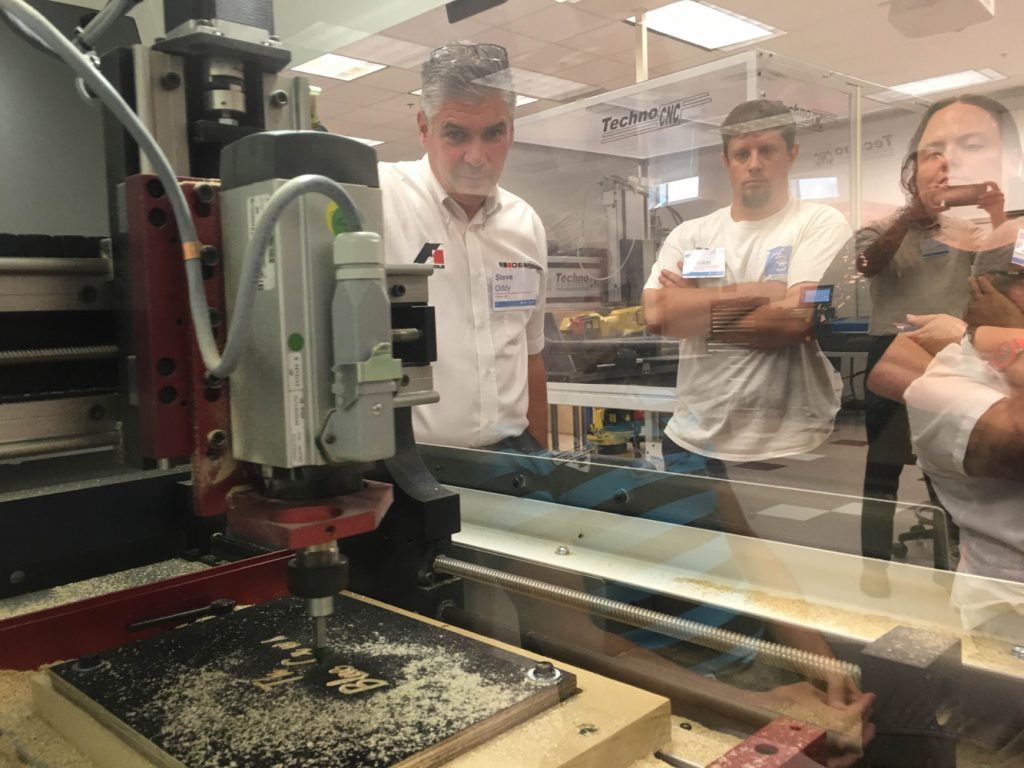Oftentimes I’ll visit a university and see big industrial machine tools sitting on a shop floor completely unused. Why is this?
This is a classic example of purchasing the wrong piece of equipment for teaching purposes. Training machinists is one thing (and I’ll get to that in Part 2 of this blog series) – but I’m referring to programs that are essentially teaching students to make widgets and parts.
Programs like engineering, bio medicine, graphic design, industrial design, architecture, and K-12 TechEd or wood shop classes all need to teach students how to operate CNC equipment. However, large, industrial machines are intimidating, unsafe, and difficult to use. Hence they go unused.
Instead, educators should consider an industrial quality educational CNC machine for education. There are a few things to consider as you look at different systems.
-
Routers vs. mills – which is best for you?
A big misconception is that all educators need a mill for their shop floors. Oftentimes a router will suit all your teaching needs.Routers are typically less expensive than mills. They are used to cut parts out of plastics or wood – and some routers are even equipped with the proper spindles to cut light metals, such as brass, copper, and aluminum. (For hard metals, like iron or steel, you will still need a mill.)
-

A big benefit to routers is that they operate at faster speeds than mills. For high school educators looking to have 20-30 students each make a part, think of the additional students you can get on the equipment in just a few class periods as opposed to a full semester’s worth of classes. The high spindle speeds used on lighter materials can reduce time spent on the machines significantly, accommodating more students per class.
What table size do you really need?
For routers and mills you want to be careful to select a table size that is appropriate for the size parts you plan to make.
If the biggest part you plan to make is six inches, then you don’t need to purchase a 50” table. Even if you have budget for a 50” table, it would make more sense to purchase two 12” or 16” tables to maximize the number of students learning on the equipment at any given time.
Ensure your machines are actually usable for students.
Industry standard CAM software can often be frustrating for students to learn – not to mention time intensive to teach. That’s why educational CNC machines come equipped with easy-to-use, Wizard-based software that prompts learners through each step of the process to set up and cut a part.
-

Denford 2600 Pro CNC training at Virginia Beach City Schools
-
Students don’t have the time required to learn exactly how to calculate the feed rate and spindle speed required for each different type of material they plan to cut. If they were to calculate these figures inaccurately when using a large industrial machine, they could accidentally break the tooling or even cut through the material and damage the machine – and the repairs could be costly.
A CNC machine for education, like those form Denford, comes equipped with a materials library in which the software calculates these rates for you, taking the guesswork away from students. This allows students to focus on what they really need to learn: how to CNC a part.
Ensure the safety of your students.
Think about your equipment users – your students. These are inexperienced machinists who likely won’t have time in a class period or two to completely understand the safety precautions required for industrial equipment.
Most educational machine tools are designed with students in mind. For example, if a student cuts too quickly through material, the machine is circuit protected and will automatically turn off. An industrial machine won’t. If a student cuts too deeply or quickly into a material, he/she could potentially break the machine, requiring an expensive repair.
At the middle school and high school level, fully enclosed machines are a great solution because these will protect students if they make a mistake that sends sharp materials airborne.
Ultimately, if you are teaching students to make a widget or a part you don’t need a huge industrial machine. Think about what happens when you teach someone to drive. A Ferrari is a fine car but you should probably start with that Honda Accord first.
Stay tuned for Part 2 in this blog series where I talk about CNC machine options on the flip side – industrial machines for teaching machinists.
9 Comments